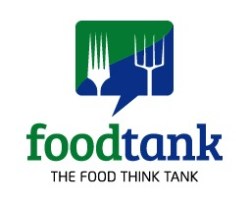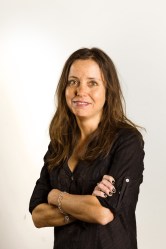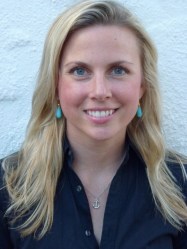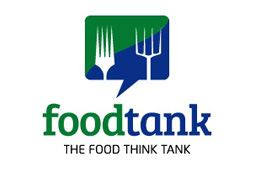 Conventional wisdom has it that the path to alleviating global hunger and poverty requires farming in the developing world to become more like agriculture in the U.S. But with American farmers now dealing with ever-more-frequent natural disasters and crippling drought, maybe it’s time they learned from their counterparts in the Global South, who have been facing similar ecological challenges for at least a decade now.
Conventional wisdom has it that the path to alleviating global hunger and poverty requires farming in the developing world to become more like agriculture in the U.S. But with American farmers now dealing with ever-more-frequent natural disasters and crippling drought, maybe it’s time they learned from their counterparts in the Global South, who have been facing similar ecological challenges for at least a decade now.
That’s what Danielle Nierenberg realized after spending three years traveling the developing world, meeting with farmers from Bolivia to Botswana to find out how they’re adapting to the changing climate’s effect on their livelihoods. Providing farmers around the world with a way to interact and share their ideas in a wiki-style format — an “innovation database,” Nierenberg calls it — will be a major component of Food Tank, the new food-focused think tank Nierenberg started with fellow activist Ellen Gustafson.
While Nierenberg has done extensive on-the-ground research for the Worldwatch Institute, Gustafson looks for ways to fix our food system through entrepreneurship and social activism. She co-founded FEED Projects, which sells tote bags to finance school meals for 60 million children around the world. The two women, both in their early 30s, kept running into each other at agriculture conferences dominated by old white men, and eventually, Nierenberg says, they decided “to combine our forces as women in this movement who have a lot of ideas.”

Danielle Nierenberg.
Food Tank’s website launches today, and in addition to an idea-sharing tool, Nierenberg says she and Gustafson hope to make it a clearinghouse for the most important food and agriculture reports of recent years. “I know I have a hard time finding where all the good reports are,” Nierenberg says. “For activists and policymakers as well as farmers, it will be a valuable tool.”
In her travels, Nierenberg was impressed by the host of sustainable agriculture methods she saw employed by small-scale farmers in developing countries — things like rainwater harvesting and biodiverse systems incorporating perennial crops. U.S. agriculture’s reliance on monocropping, she says, can blind us to innovations that, if adopted on a wider scale here, could leave U.S. farmers “a lot better off in dealing with what Mother Nature throws at us.”
To that end, Nierenberg and Gustafson also plan to build a “Johnny Appleseed fund” to award small grants to such innovative food and farming projects, shining a light on them to attract the attention of bigger foundations. “The funding community tends to focus on big, sexy technologies,” Nierenberg explains. “But they often don’t live up to their promises. All these things that are already working — why not invest in them?”
Moving farming systems away from monoculture and toward more-sustainable permaculture requires an overhaul of the status quo that can’t happen overnight. Part of the problem, Nierenberg says, is that measurements of food security on which policymakers rely don’t reflect the realities of the world we live in. “For most of the last half-century, the focus was on yields and calories and less on nutrition, gender equity, and environmental impacts,” she explains (hence the fervor over genetically modified crops’ potential to feed the world). “If a food system is not helping sequester carbon, improving soil health, and [conserving] groundwater supply, it’s not healthy. If it’s not making that particular farmer money, then it’s all for naught.”

Ellen Gustafson.
In the U.S., for instance, our current system leaves so many farmers beholden to Big Ag because that’s the only way they can get access to credit and loans. It subsidizes cereals like soy and corn but neglects vegetables and protein-rich legumes and grains, effectively making unhealthy food the most affordable. “If you look at hunger in sub-Saharan Africa and obesity in the U.S., it’s part of the same problem,” Nierenberg says. “A food system that’s broken, [that’s] not providing proper nutrients to people.”
Gustafson has given a TEDx talk on the connection between obesity and hunger, and it’s this kind of silo-breaking and search for common ground between disparate elements of the broad “food movement” that characterize the kind of change Food Tank hopes to inspire. Nierenberg fully admits that she spent the last 10 years immersed in the “very white, very elitist” world of food activism. “We really need to move beyond what’s happening in our own communities and what we’re able to put in our own bodies,” she says. “It’s not just about your CSA, it’s about a whole bigger system that needs to be changed.”
Nierenberg and Gustafson are well-positioned to push for change on multiple fronts. In addition to collecting research and reports and sharing resources and innovations, they’ll be working on a book about how to unite red and blue states around the food system, doing research and meta-analyses of their own, and writing policy briefs. “As resources become tighter for governments, there’s a lot of opportunity for them to see what’s literally happening in their own countries, and how those things might provide a bigger bang for their buck in terms of investment,” Nierenberg says.
Food Tank is currently run by a team of about five people (but hoping to expand) and financed by personal contributions so far (and grant money in the future). Despite its small, entirely virtual operation, the two founders’ extensive contacts in the field have yielded a listserv of around 85,000 people, and they’ll look to their audience for feedback on where to focus their efforts.
“There’s no organization that’s women-led, youngish-person led, that’s looking at all these things, trying to bridge the domestic and the global,” Nierenberg says. “We’re filling a niche that we didn’t see filled.”



